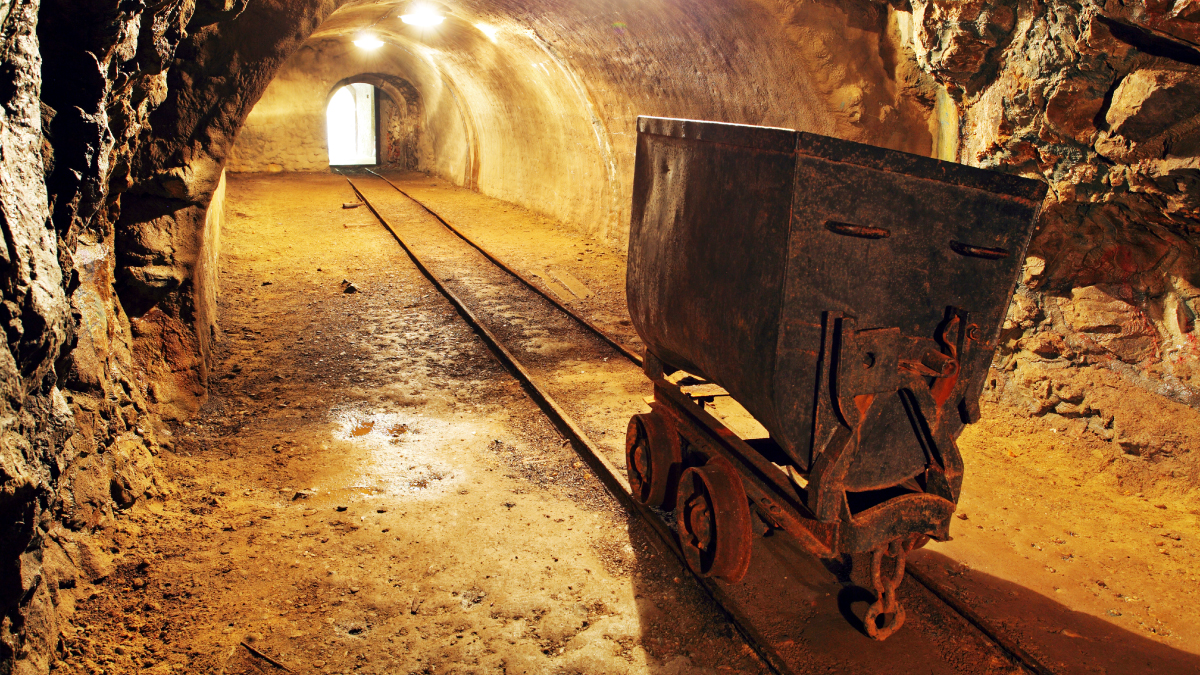An UNCTAD solution for developing countries to digitalize and share data on natural resources gains renewed significance amid soaring demand for minerals vital for the transition to clean energy.

© Adobe Stock/TTstudio | An underground cart in copper mine.
Clean energy systems are expected to raise copper demand from 23% to over 42% of total demand by 2050.
Technology and data can help developing countries unlock their mineral resources treasure chest.
UNCTAD has a solution for digitalizing and sharing data to facilitate the discovery of new natural resources.
The global quest for a cleaner energy system has escalated the demand for critical energy transition minerals such as lithium, cobalt, nickel and copper.
These minerals play a crucial role in renewable energy technologies such as solar photovoltaic cells, wind energy, battery storage and electric vehicles.
For example, the demand for copper in clean energy systems is forecast to increase from 23% of total demand across all applications to over 42% by 2050, according to UNCTAD calculations based on data from the International Energy Agency.
But if copper’s production continues at its current rate, the burgeoning demand won’t be met, creating a significant gap that needs to be addressed to keep global warming to no more than 1.5°C, in line with the Paris Agreement on climate change.
Tech can help unlock hidden mineral treasures
To meet the increasing demand, countries need to explore new resources abundant in high-grade mineral ores and attract investments into the sector, among other essential measures.
They can use technology and data to identify resources that traditional geologists might overlook and assist miners in determining optimal drilling locations.
For example, in Zambia, a private company has used artificial intelligence to generate geological maps of the Earth’s crust, resulting in the discovery of a large-scale high-grade copper deposit.
It did so by applying algorithms to analyse multiple data streams, ranging from historical drilling data to satellite imagery, enhancing the identification of potential new deposits.
The breakthrough in Zambia’s exploration of new copper resources shows how developing countries can use innovative approaches to discover new reserves of critical minerals and help bridge the gap between supply and demand.
“Countries need better data to benefit more from these minerals, while protecting the planet,” said Miho Shirotori, head of UNCTAD’s international trade division.
Many developing countries lack the reliable data needed to attract investments into their undiscovered minerals.
A network solution
One key solution, first proposed by UNCTAD in 2009 and gaining renewed urgency amid the global energy transition, is the creation of an international network for digitalizing and sharing data to facilitate the discovery of new natural resources.
UNCTAD's initiative, known as the Natural Resources Information Exchange (NRIE), aimed to create a repository of digital information, focusing on geoscientific historical data.
The initiative previously stalled due to technical gaps in some of the potential beneficiary countries and the complexities of legal frameworks and regulations relating to data ownership, access rights and confidentiality.
UNCTAD is now revamping the initiative with an emphasis on strengthening the capacity of countries to manage their wealth of data.
The new initiative could assist mineral-rich countries in Africa and elsewhere to create their own natural resource data banks to capture the untapped value from geosciences information to optimize natural resource development and management.
These data banks would include a range of digitalized historical mineral data, such as:
- Old maps and information on rock formations, mineral composition and geological structures.
- Exploration data comprising drilling results, geophysical surveys and geochemical analysis.
- Production data detailing quantities extracted, grades of ore and production methods.
- Environmental data such as water quality assessment, air quality monitoring and biodiversity surveys.
The initiative would enable developing countries to harness the power of technology to compile and analyse vast amounts of data, empowering them to make informed decisions about their mineral reserves responsibly and inclusively.
Inclusive approach
UNCTAD advocates for a collaborative and inclusive approach involving governments, companies and institutions with geoscientific archives working together to develop natural resources data banks.
It will support beneficiary countries in developing their capacity to digitalize and organize their historical mineral data. The initiative would facilitate easy access, search and retrieval of archived information through digital databases and artificial intelligence as demonstrated in recent efforts in Zambia.
It will also enhance the efficiency of data governance by providing more comprehensive and precise datasets. This could improve decision-making among policymakers, government agencies and industry stakeholders regarding resource allocation.
Furthermore, developing countries can bolster their capacity to attract investments, which could spur economic growth and contribute to meeting the global demand for critical energy transition minerals in a sustainable manner.
According to UNCTAD, it’s also essential to ensure the soaring demand for critical energy transition minerals doesn’t further entrench countries’ dependence on commodities for their export earnings.
Such dependence leaves countries vulnerable to market price fluctuations and global economic shocks. It’s also linked to lower socioeconomic development.



